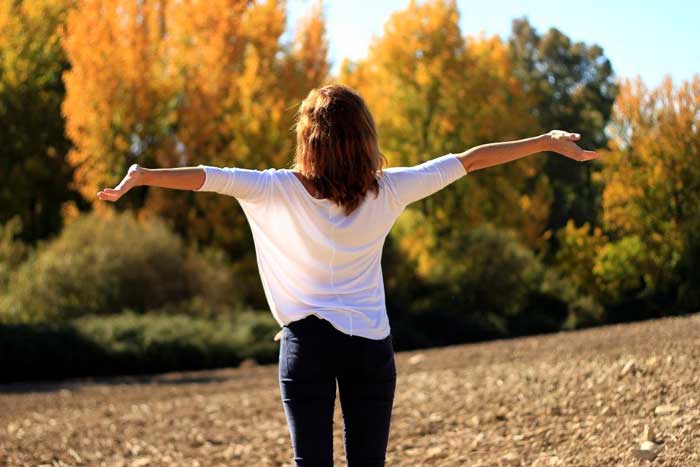What exactly happens in our brain and body when we face danger? Our ancestors encountered life-threatening events and developed the ‘fight-flight-freeze’ response. We are going to examine how we use the stress response when facing emotional and psychological threats in today’s environment.
How does the stress response prepare us to stand our ground, flee or feint death to save us when facing danger?
Our body’s ‘fight-flight-freeze’ response is the product of evolution and it takes place without our conscious control. However, we are all familiar with some of its symptoms. Understanding these may enable us to better respond to it and by doing so avoiding it to escalate into anxiety.

Thoughts racing and disjointed – caused by an adrenaline release.
Dizzy / lightheaded – due to adrenaline and increased oxygen levels.
Surroundings seem distant or visual ‘tunnel’ – dilated pupils allow you to take in as much visual information as possible.
Heart pounding – The heart starts beating faster to increase circulation since the body anticipates it will be working harder to service the muscles.
Difficulty breathing – the lungs throat and nostrils open up to flood the lungs with enough oxygen to keep up with the increased circulation of blood – this can trigger shallow, rapid breathing.
Tightness in the chest and throat – the body is overloading on oxygen and this can be dangerous if you do not burn it off. Consequently, the body tries to reduce the levels by constricting the chest and the lungs, therefore reducing breath intake.
Shaky voice – an overload of oxygen interferes with vocalising.
Neck and shoulder tension – caused by the oxygen pumping to muscles, and after-effects as the oxygen reduces.
Blushing – Adrenaline causes your blood vessels in your face to dilate in order to improve blood flow and oxygen delivery.
Sweating – The body heats up because it is working harder to circulate blood. And then sweats so it can cool itself down.
Butterflies/’sick’ feeling – Cortisol shuts down your digestive system, (as it is not needed to fight or run) and redirects blood to essential systems such as the heart, lungs, legs and arms. This can also cause nausea and diarrhoea.
Dry mouth – Cortisol shutting down non-essential systems reduces saliva in the mouth.
Need to urinate (and maybe even pass a stool) – The bladder and bowels may open out to reduce the need for inessential internal actions.
Trembling, wobbliness, tingling and shaking – an effect of adrenaline and oxygen overloads.
(Based on Veronica Walsh’s CBT Blog)
Old response to new challenges
The stress response described above, developed over millions of years of evolution and ensured the survival of our species. Our ancestors encountered mainly physical threats. These kind of life threats, such as predators, are less common today. Instead, we have emotional, psychological and social stresses to deal with.
As dangerous physical situations receded, our ancestors’ brain turned off the stress response and started to re-balance their mind and body. The nervous system entered the state of ‘rest and digest’, our default calm state, governed by the parasympathetic nervous system.
In the 21st century the majority of stressors threaten our ‘ego’ or ‘self’. Our physiological response to these, often only ‘perceived’ threats, is the same as it is to the ‘real’ ones. What has changed, however, is our ability to find balance and re-regulation after being in a stressful state. This can create health and mental issues for us today.
Has our brain adapted to the 21st century?
Todays threats include the fear of being judged, abandoned, ridiculed, or deemed incompetent by peer groups that matter to us. The presence of social media and how it is continuously making us self-conscious and self-judgemental complicates things even more.
We have become the victim of our imagination, self-judgment and anxiety.
“What if…?”
“Will I be good enough…?”
“I’ll make a fool of myself if…”
“What if I’ll fail..?”
Questions like these echo in our head with no reprieve. We are stuck in relentless cycles of self-induced stress. This diminishes our capacity to enter the soothing, parasympathetic ‘rest and digest’ state of mind and body. If we don’t know how to relax and recharge we risk developing mental and physical illnesses.
It’s not likely that our brain will make noticeable adaptations to match the challenges of our modern life. However, we CAN change or rewire how our brain works and teaches it to step out of these viscous cycles.
5 tips to calm your nerves
1. Understand anxiety
Becoming better informed about how anxiety works is a good way to start. Here are a handful of articles on the nature and symptoms:
2. Feel the present moment before flooded by the stress response

Grounding techniques are great when you start being carried away with strong emotions. The purpose of grounding is to bring your focus to the present moment. In doing so you de-activate the parts of the brain involved with fear, worry and anxious thoughts and energise the ones that are associated with feelings of safety. There are many different techniques to choose from:
- feel your feet on the floor and experience the sensations of warmness, coldness, softness or hardness.
- clap or rub your hands together and closely follow the sensations that arise.
- name objects around you that are a particular shape or colour.
- count back from a hundred in increments of 17.
- name your feelings and emotions in they emerge (for instance ‘I’m frustrated and shocked.’)
3. Engage in a creative and enjoyable activity

You’ll notice when you’re doing a creative activity your brain immediately calms down. Your focus will shift on the task you are undertaking. The ‘multitasking brain’ is a fallacy. Consequently, your brain cannot worry while it is paying attention to your activity at hand.
You may well find yourself in the state of ‘flow’, being fully immersed in a feeling of energised focus, yet relaxed. This state of the mind will gradually lessen levels of anxiety.
4. Yoga

Yoga is uniting body, mind and breathing. It can teach you to be consciously present.
Why is this important?
First, focusing on the present moment has a calming effect on the mind.
Second, there is a certain amount of intended discomfort in the asanas (the yoga poses). This is exactly what we want to learn: to become comfortable with the uncomfortable in order to cope better with life’s challenges.
Third, the abdominal breathing utilised in yoga switches on the parasympathetic (or rest and digest) nervous system.
Those wanting a more authentic answer to this question from a mystic yogi, listen to Sadhguru here.
5. Establish daily balance

Easier said than done: spend more time outdoors! The positive effects of nature on our brain are immeasurable. Try to balance your indoor activities with some outdoor ones and you will notice your mood lifts. As a side effect your sleep will improve too.
Bring balance into your days by monitoring how much time you spend with different activities. Balance screen time with exercise, mental work with fun time and time spent alone with catching up with your ‘tribe’.



